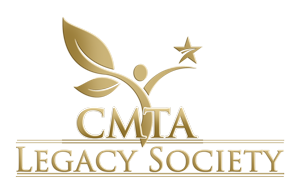By Katherine Forsey, PhD | CMTA Chief Research Officer
Current treatments for Charcot-Marie-Tooth disease (CMT) focus mainly on managing symptoms. But new advances in genetic therapies are changing the conversation and offering real hope for the future. CMTA is investing heavily in research that targets the root cause of CMT: the genetic mutations that drive the disease.
I’m putting these therapies under the microscope because they’re going to come up more and more as research advances toward clinical trials. It’s important for all of us to stay informed, so let’s dive in.
What Are Genetic Therapies?
Genetic therapies aim to correct or modify the underlying mutations that cause diseases like CMT. These therapies can work in several ways, including repairing, replacing, turning off, or adjusting how much of a gene is expressed.
You might hear “gene therapy” and “genetic therapies” used interchangeably, but there’s a difference:
- Gene therapy refers specifically to inserting a healthy copy of a gene into cells to replace or compensate for a faulty one.
- Genetic therapy is the broader category. It includes gene therapy, but also tools like gene editing, gene silencing, and RNA-based treatments.
Types of Genetic Therapies
Through CMTA’s Strategy To Accelerate Research (CMTA-STAR), we’re supporting work on a wide range of genetic therapy approaches:
- Gene replacement therapy – Delivers a working copy of a gene. CMTA is supporting work on this approach for CMT4C at the University of Texas Southwestern (UTSW) with researchers Xin Chen, MD, and CMTA-STAR Advisory Board member Steven Gray, PhD.
Other Genetic Therapy Approaches
- CRISPR/Cas9 – Molecular scissors to precisely cut and fix faulty DNA. We’re funding CRISPR-based studies at Gladstone Institutes with CMTA-STAR Advisory Board member Bruce Conklin, MD, for multiple types of CMT.
- Antisense Oligonucleotides (ASOs) – Silences faulty genes by interfering with the RNA before it can make disease-causing proteins.
- Small Interfering RNA (siRNA) – Silences faulty genes by interfering with the RNA before it can make disease-causing proteins.
- shRNA (short hairpin RNA) – Long-acting RNA therapy that can silence gene expression
- Gene replacement therapy – Delivers a working copy of a gene. CMTA is supporting this approach at the University of Texas Southwestern (UTSW) with researchers Xin Chen, MD, and CMTA-STAR Advisory Board member Steven Gray, PhD.
- Base editing and prime editing – Precise, next-generation tools for rewriting individual DNA letters without cutting the DNA strand.
Our CMTA-STAR investments support multiple genetic therapy programs across the spectrum from the most common type, CMT1A, to rarer subtypes like CMT4C and CMT4J. These approaches have the most potential for impact because they may directly address the underlying genetics driving CMT.
The Big Hurdle: Getting to the Peripheral Nerves
One of the biggest technical challenges in treating CMT is delivery. Most genetic therapies need to reach the peripheral nerves, which are long, delicate structures protected by something called the blood-nerve barrier. The blood-nerve barrier provides important protection to nerves, by keeping harmful substances out. But that same barrier can also provide a challenge, and needs to be bypassed for delivery of therapeutic treatments to the nerve.
CMTA-funded researchers are exploring multiple delivery strategies, including viral vectors, nanoparticles, extracellular vesicles, and direct injection, to get therapies where they need to go.
What’s in the Clinical Trial Pipeline?
Thanks to our CMTA-STAR Alliance Partners, several CMT genetic therapies are moving closer to clinical trials:
- CMT1A – Novartis is developing an ASO, Armatus Bio is using siRNA with an AAV9 vector, Nervosave Therapeutics is exploring shRNA via local injection, and Sarepta is also working on a gene therapy approach. All aim to reduce the overexpression of the PMP22 gene. More than 200 CMTA community members helped shape one of these programs through our Patients as Partners in Research platform.
- CMTX1 (CMT1X/CMTX) – CMTA-STAR Advisory Board member Kleopas Kleopa, MD has created a gene therapy that replaces the faulty GJB1 gene that has shown success in animal models.
- CMT1B and CMT2A – CRISPR-based therapies are showing encouraging signs in early research.
- CMT4C – CMTA and University of Texas Southwestern are working together on Project Foresee to bring an AAV-based gene therapy into an investigator-led clinical trial.
- CMT4J – CMTA is supporting Elpida Therapeutics in their work to bring gene therapy to CMT 4J patients by supporting the 4J Natural History study as the company prepares for the clinical trial in parallel.
If these strategies succeed in these types of CMT, they can be adapted for other subtypes. Once we solve the delivery challenge, the technology becomes more widely applicable.
Looking Ahead
Genetic therapies represent a transformational step forward. They don’t just manage symptoms; they aim to modify the disease itself.
While obstacles remain, particularly around delivery, the CMTA is committed to driving this science forward. We’re hopeful that within the next 5 to 10 years, several of these therapies could move into clinical trials and eventually reach patients.
How You Can Help
This research doesn’t move forward without the community.
- Donate to CMTA-STAR to fuel this work.
- Join Patients as Partners in Research to help guide therapy development and be the first to hear about trial opportunities.
Together, we’re changing what’s possible for people with CMT.
Under the Microscope is a quarterly column from CMTA Chief Research Officer Dr. Katherine Forsey, offering an inside look at the science behind CMT research and what it means for the CMT community.
About the Author
Katherine Forsey, PhD, is a trained biologist in the UK, earning her PhD in reproductive biology and IVF. As the CMTA’s Chief Research Officer, she leads CMTA-STAR and oversees the CMTA-STAR Advisory Board, a team of over 30 world-renowned CMT experts who evaluate research projects and help shape CMTA’s scientific strategy. Under her leadership, CMTA-STAR is managing more than 50 active research projects across academic labs and industry collaborations.
Published on: June 30, 2025





